Pyke Gear, Hunt Redi, and Final Rise: the age of Modular System Upland Vests is Upon us in an Exciting Age of Upland Revival.
It seems the only thing we American sportsmen and sportswomen love more than a good starter kit is a vest. The ubiquitous fly-fishing vest, tactical vest, camera gear vest, turkey vest, shooting vest, falconry vest, technician’s vest, and of course the upland bird hunting vest. This last one clutch piece of gear is as much a statement piece as it is functional.
A vest says that you are purposeful and ready for anything, each one of your pockets bulging with the accoutrements to take on any possibility an adventure may throw at you. Ever since Lee Wulff cut the sleeves off a safari jacket to create the first fly-fishing vest, we’ve been hooked.
Of course vests have evolved a great deal since their original employment. In the 1980s and 1990s, the more pockets you had the more you looked like you knew what you were doing. I fell for that aspect of vest ownership when I first started upland bird hunting over 25 years ago. I chose a waxed canvas version from a well-known company. They advertised this vest as being able to last over 100 years and its most innovated feature was a pocket that wouldn’t squish your sandwich.
It had many other pockets as well: a couple in the back, some inside, but none were useful or fulfilled any need in their placement. As far as design went, it was terrible. The game bag was built into the body of the garment instead of the more practical outside game bag and birds would cook with their own body heat from lack of air flow as they pressed against my sweaty back. It wasn’t a cheap vest at the time, and although it was supposed to be able to withstand a lifetime of hunting abuse, I wished to the hunting gods it wouldn’t so that I could justify replacing it, which I eventually did.
I still have my old bird vest. It leans patiently in the corner of my garage, its waxed canvas still stiff as board, hoping that nostalgia will make me forget how horrible it was. And it was horrible; however, it wasn’t much different than other bird vests of that era, many constructed as if the designers had not actually hunted birds themselves.
Enter the Strap Vest
As time went by, evolution occurred and our bird vests started changing. Some had smart and interesting details; some had some real head-scratchers for features that probably only made sense to their creator and some solved problems that didn’t exist. There were no real standouts until the strap vest hit the scene. I’m not sure who came up with the design first, but it stripped down all the useless features that came with most vests and gave you two shell pockets and a game bag at your back. Gone are the 70 empty pockets you felt obligated to fill with the dead weight of possibility, no extra material to overheat you or the birds you bagged—it all made sense in its simplicity.
But soon enough other companies came out with their own version of the strap vest. They added this or that and what was once simple became complicated again. These once simple vests now inundated with aspects that never pleased everyone who purchased it. Often design features were poorly executed, such as loose shell loops and shallow pockets that sprinkled their contents all over the hinterlands. There was no way to hang on to e-collar transmitters, no way to carry water comfortably in high volume, and so on.
READ: Other Upland Vest Reviews
Enter the Modular System Strap Vests
I lost track of the number of vests I have modified over the years in my pursuit of perfection. I also lost track of the number of well-meaning emails I sent to manufacturers begging for special changes to be made to their vests, all met with a chorus of crickets. This lack of customizable vests has not been lost on bird hunters as a culture, so much so that the call for versatility, not the “take what you can get” standard of the past, has finally been answered by three separate American manufacturers.
To start, I find it incredible that none of these manufacturers coordinated with each other on their releases because the most notable feature of all three vests is a modular system that is compatible with one another as well as a host of other manufacturers, making the availability of after-market pockets and accessories seemingly endless.
The configurations are up to the user—if you liked the pockets on one of these new vests but not the game bag, you could easily mix and match them. Unlike other modular systems in upland vests of the past, all of these have a sewn-on feel to them; they aren’t loose and flopping around. Though they took different routes to the same destination, the details in each vest tell a story of that particular maker’s journey through upland bird hunting. They seem to have been mindful that your idea of perfection might be slightly different than the version they have created.
Pyke Gear’s Wingman
The first of these vests is Pyke Gear’s Wingman. It is lightweight with a very slim profile, which is perfect if you don’t like taking your vest on and off for rides in the truck in between quick hunts. This svelte strap vest is made in the USA. Some features I really like on this vest are the waist belt; it is covered in a synthetic suede material and grips well. The padded portion of the belt is 36 inch with a webbing belt that can accommodate a 46 inch girth on large models. The removable pockets are 2.5 inches by 6 inches by 7 inches, which I felt was just the right size for a box of shells or a compact camera.
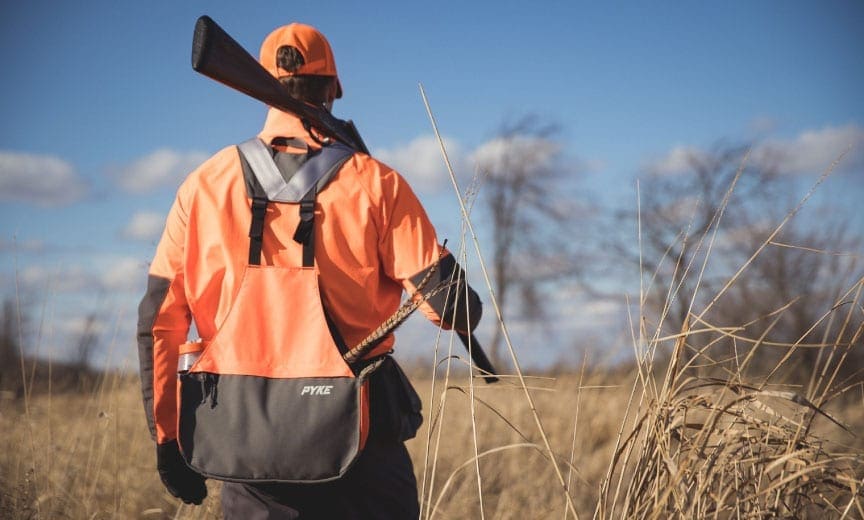
The shoulder straps are broad and thin and don’t get in the way of the gun mount at all. Their width makes for comfortable load distribution if you prefer to carry the bag’s weight on your shoulders. The sternum strap requires two hands to use but I was told this is something the manufacturer will be addressing soon. This is a pet peeve of mine, for any piece of gear, when you are required to juggle your gun to use.
The Wingman comes with a water bladder pouch and two water bottle holsters with their proprietary water bottles but adjusts to fit third party water bottles and is currently patent pending. Since this is built on a modular system you can swap out any Pyke gear accessories with anything you might prefer as long as they are compatible with Molle or Pals webbing.
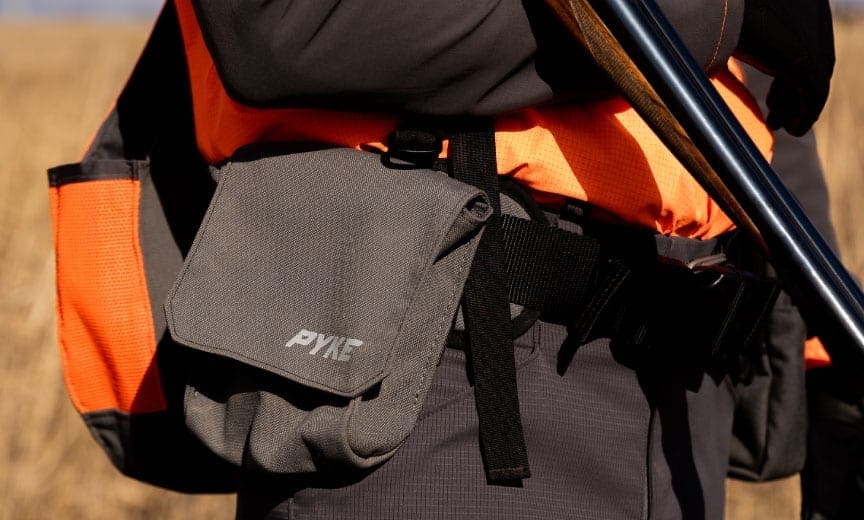
One of the things I really don’t care for is the game bag. It is very small and difficult to load while wearing. I found I had to chase it around to load it while wearing the vest. The bag is also designed in a way that if you used the water bladder pouch for its purpose or filled it with essentials it will cut into the already limited space of the game bag. While solidly built, at $300, it feels over-priced given the feature set relative to other vests, making it more difficult to justify the price tag.
Hunt Redi’s Deviate
The second vest I tried is Hunt Redi’s Deviate system, manufactured by FirstSpear, a USA company that builds gear tough enough and smart enough for the military. Its attachment system is Molle and Pals compatible, but the native accessories come with a hook and loop attachment system called “6/12” which uses laser-fused cuts in a patented fabric that was not only unique but rock solid in its grip. I tried my best to get them to come loose and they held fast.
Listen To: #97 | Reliable Equipment Driving Inspiration with Hunt Redi – Project Upland Podcast
This vest is built like a tank and as comfortable to wear as an old pair of sneakers. Of the three vests I reviewed, it has the largest profile, but if you liked the Wing Works vests you will love this. The extremely grippy padded waist belt comes in at 37 inches with enough webbing to accommodate much larger sizes. There are various removable shell pockets available; the ones I tried are the deep style (which I prefer) being larger than Pykes at 5¾ inches x 3½ inches x 7 inches deep.
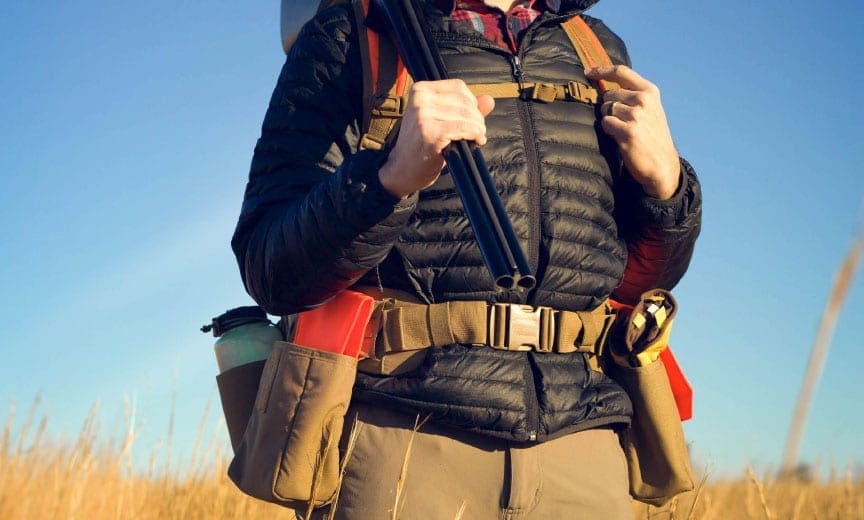
Hunt Redi has a host of innovative accessories available to help you customize your configuration. One feature that stood out to me was the moveable D-loop you can use to hang your electronics on. It’s these little things that make this vest special.
Besides being able to accommodate a wide range of body types with its adjustability, another key feature I appreciate was the roomy game bag. I wouldn’t worry about meat spoilage in the early season with this product as it’s big enough to hold a few birds and a camera. Removable water bottle holsters that hold Nalgene diameter bottles snugly are also available. Several functional well-thought-out pockets are sewn in the game bag to provide ample storage for dog gear and other necessary equipment without cutting into the room of the game bag itself.
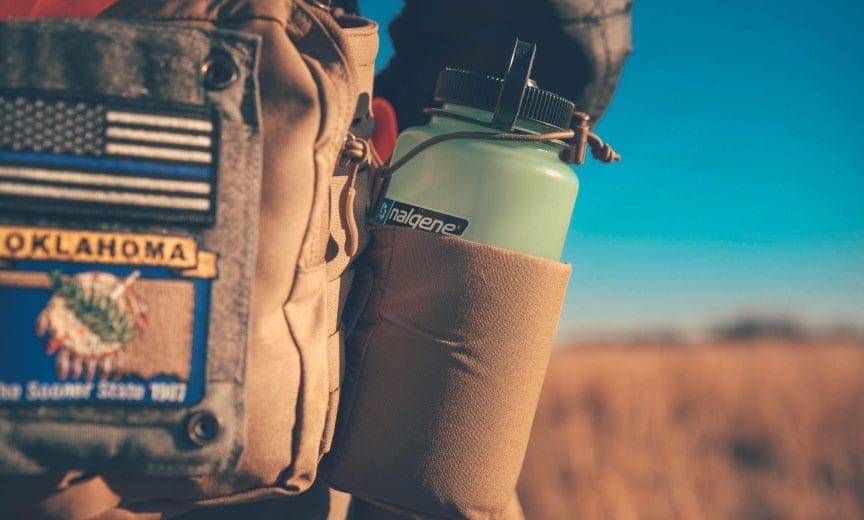
If that isn’t enough, you could easily purchase other pockets from Hunt Redi or any manufacturer using Molle or Pals compatible accessories to house your necessities for the hunt. The only limitation with this vest is your imagination—it is incredibly versatile. I am very critical of gear and was looking forward to going through this vest with a fine-tooth comb. Keeping in mind that I can add anything Molle or Pals compatible to this vest to make it work for me, I really couldn’t find anything I disliked about this system. There were a couple things I might tweak, but I doubt they would matter to anyone else but me. Overall, at a base model price of $325 this vest system represents solid value for money.
Final Rise
Last and surely not least is the Final Rise vest made in Utah by Matthew and Darby Davis. That’s right, he and his wife make them together in their home garage one at a time, something that I, as a chronic DIY’er, appreciate. The personal touch is evident as the attention to detail in design and finish is exemplary. A ton of thought went into this vest and it shows. I found it solves a lot of problems that came with other popular strap vests on the market.
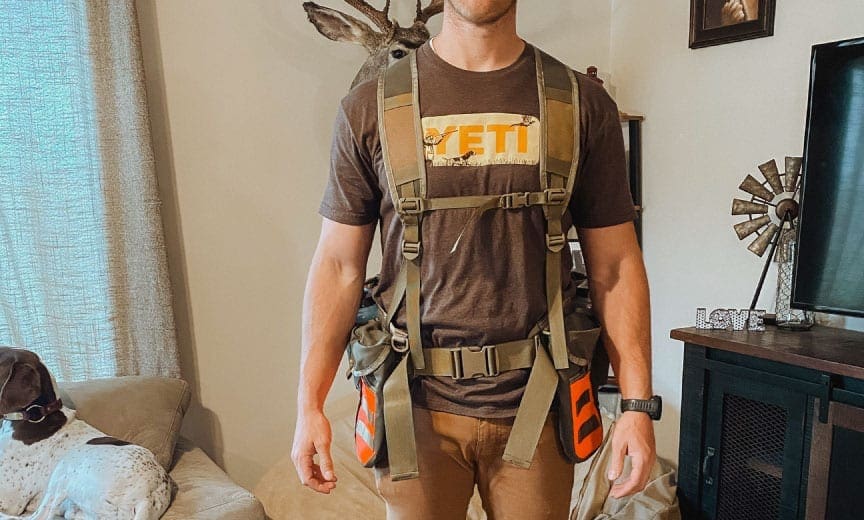
If you are familiar with ultra-lightweight big game hunting packs meant to haul lots of weight comfortably, there will be many features in this vest you will be absolutely thrilled to recognize. While this vest has been firmly embraced by the chukar hunting community, I feel like it would also be a great grouse hunting setup with more than enough room to carry ammo, water, safety and mirrorless camera equipment… or just a few shells for a slim profile. The game bag is large enough to fit seven pheasants or even your injured dog comfortably, as more than a few customers have displayed on Instagram, something I, as a Lab and plus sized setter owner, did not put to the test.
Listen To: #112 | Introducing the Final Rise Strap Vest with Matt Davis – Project Upland Podcast
The padded belt was the smallest of the three tested at 33.5 inches plus webbing but it was very comfortable. One key feature I absolutely love is the lumbar pad. It locks the vest and all the weight you are hauling in place against the small of your back, keeping the padded belt on your hips where it needs to be to keep weight off your shoulders. If the weight were allowed to move away from your body it would affect your center of gravity and become much less comfortable and stable. Couple this with the nearly endless ability for adjustment and you have yourself a true upland hauler that is as comfortable to wear in the morning packed with full water bottles and bladder as it is in the evening when you get back to the truck with a pile of birds and shed antlers. You would think a piece gear like this would feel like a saddle to wear kind of like some other popular vests on the market today; however, when empty it lays flat and has a slim enough profile you would hardly notice all of that function until you really needed to call upon it.
Throughout this vest are small, smart zippered pockets that stay closed and out of the way until you need them, something I appreciate as a guy who has left his truck keys, wallet, and cell phone in the woods due to poorly designed pockets of previous vests. One of my favorite parts of this vest is the zippered shell pockets; they are deep and wide enough at 7 inches by 9.5 inches that my big hands can reach in, grab my Sony mirrorless camera, snap a few quick pictures while moving toward the dog on point and put the camera back in easily. There is no flap cover to contend with or noisy Velcro to spook birds into flushing wild.
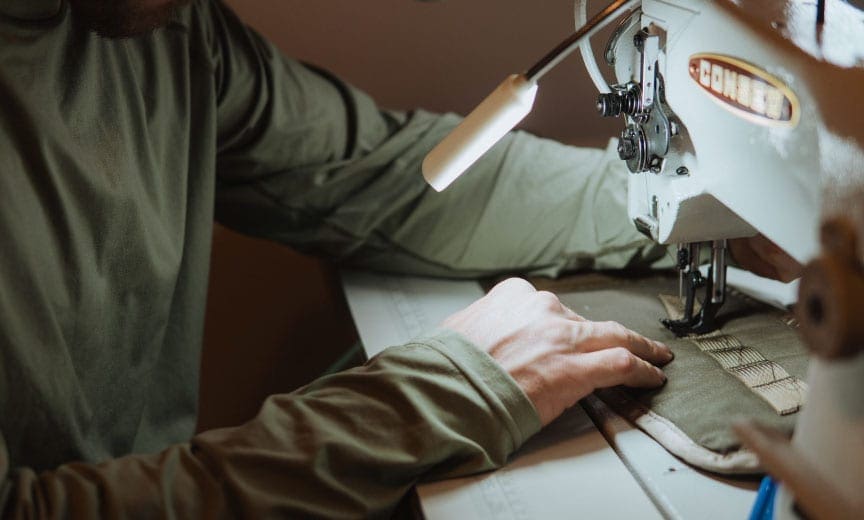
A review with no negatives is worth an eye roll or two and maybe some incredulity but in all honesty, like the Hunt Redi vest, I really couldn’t find anything I disliked about the Final Rise vest. It’s intelligently overbuilt and at $300 I feel it offers outstanding value for the money. Couple that with the fact it’s handmade by a family in the USA, and, well, you get the idea…
There you have it: three American made Upland strap vests that all took different routes to reach the same conclusion. While we all have similar goals, not every bird hunter needs or wants the same thing in a vest. In my opinion there is no better time to be a bird hunter and a gear junkie. I look forward to seeing what the future brings for all three of these companies in innovation.
*Author was provided the three vests on loan from each company to try out and to review and received no monetary or merchandise compensation for his review from any of the companies.
Wing Works: Redefining the Strap Vest
#112 | Introducing the Final Rise Strap Vest with Matt Davis – Project Upland Podcast
#97 | Reliable Equipment Driving Inspiration with Hunt Redi – Project Upland Podcast











































